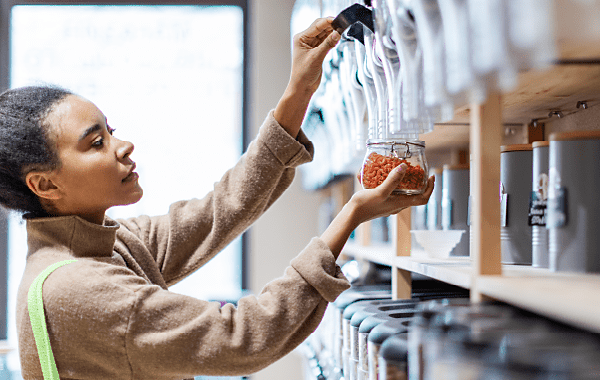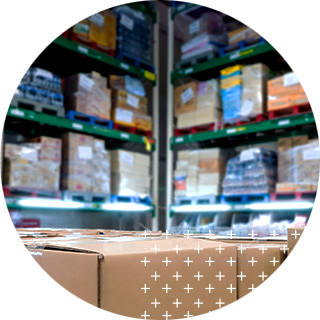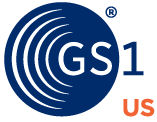Sustainability is about meeting current needs without compromising the ability of future generations to meet theirs. Resources are finite. Sustainable practices look to use them wisely in recognition of the long-term impact. Balancing economic growth with ecological and human health is central to sustainability and securing the future for generations to come.
For many companies, becoming more sustainable was the sixth priority on a list of five. But the impacts of climate change and geopolitical challenges are becoming more apparent every day. Consumers are using their wallets to drive change and push businesses to confront and expand on their sustainability practices. According to First Insight, 62% of Gen Z surveyed prefer to buy from sustainable brands. Most are willing to pay 10% more on sustainably made products. So it’s no surprise that companies are taking a hard look at even their supply chains in an effort to become more sustainable.
What are they doing? And how can you learn from it? Below are four examples of how some companies are creating a foundation for sustainability:
Capture value from waste – Bring waste back into the value stream by repurposing or recycling it. By doing so, you can help reduce the new resources needed to create products.
Rethink materials – Work to ensure that more materials are recyclable, reusable, or biodegradable. For example, there are cornstarch, wood pulp, and seaweed alternatives to single-use plastic. Or consider packaging that can be used again by the consumer. For example, use a glass container instead of plastic for food or fold an apparel item and tie it off with stylish ribbon instead of using a polybag.
Examine sourcing – Consider local sourcing options to help reduce supply-chain bottlenecks and decrease the time, distance, and resources consumed in product travel. Use suppliers who have implemented sustainable practices.
Ensure transparency – Employ technologies and tools that help you and your trading partners better share data and collaborate effectively. Doing so can help trace product movements, establish origin of raw materials, and empower you to share all this information, including sustainability claims, with consumers.
What Does It Take to Create a Sustainable Supply Chain?
Creating a sustainable supply chain is a long-term commitment. It requires collaboration and the ability to track and easily share information across trading partners about where materials came from, how products were made, and where they went. End-to-end visibility is an important element of a sustainable supply chain.

There are four key aspects of sustainable supply chain management:
Certifications and Impact – Consumers want to know that the products they buy are sustainably made and ethically sourced. They care about the carbon footprint of the products and their environmental impact, which requires trustworthy claims and credentials. So it will be necessary to track and measure a product’s journey from origination to consumption.
Sustainable Packaging – Rethink your approach. Right-sizing, redesigning, or integrating more post-consumer recycled materials can result in a big reduction of virgin resources used.
Waste Mitigation – Better visibility can help improve inventory management. This, for example, can aid in more precise recalls that avoid throwing out food unnecessarily. Transparency into product data about origin and material composition can make it easier to decide what to do with a product at the end of its useful life. Doing so can reduce waste and keep unwanted materials out of landfills and oceans.
Reuse and Resale – Giving products a second life by reusing them or reselling them on a secondary market is not only good practice for sustainability, but also good business.
Reduce Your Supply Chain’s Carbon Footprint
Finding ways to reduce your supply chain’s carbon footprint starts with measuring impact. Understanding where raw materials come from, whether they were sustainably produced, and how far and by what means they’ve traveled is a great starting point.
Reducing a product’s environmental impact requires intentional use of data and technology. The ability to identify products and locations in the supply chain, to capture data about what happened to the products and where, and to share that information seamlessly with the right party is the key to unlocking visibility. From there, you can use data to make decisions. It will be easier to gauge the effectiveness of improvements such as a cleaner running fleet, better logistics, more efficient solutions for last-mile delivery, and sourcing locally.
And your customers are demanding this information. Giving them trustworthy data about your product’s carbon footprint could help an environmentally conscious consumer choose your product instead of a competitor’s.
Use Sustainable Packaging
 Consumers expect items they buy in stores or have delivered to their homes to be in pristine condition. From clam shells for grape tomatoes in supermarkets to polybags for fashion items, packaging plays a critical role in protecting the condition of the product and ensuring satisfaction. Much of this packaging is designed for single use. Some of it gets recycled, but much is sent to landfills. According to the EPA, packaging waste—plastic or otherwise—accounts for nearly 30% of the 292 million tons of annual waste in the U.S.
Consumers expect items they buy in stores or have delivered to their homes to be in pristine condition. From clam shells for grape tomatoes in supermarkets to polybags for fashion items, packaging plays a critical role in protecting the condition of the product and ensuring satisfaction. Much of this packaging is designed for single use. Some of it gets recycled, but much is sent to landfills. According to the EPA, packaging waste—plastic or otherwise—accounts for nearly 30% of the 292 million tons of annual waste in the U.S.
When it comes to sustainable packaging, reuse is an important part of the conversation. But the story may not be as simple as it seems. For example, according to a study summarized by MIT’s Office of Sustainability, a stainless-steel bottle would need to be used somewhere between 10 and 20 times to break even with the environmental impact of a single-use PET bottle. In contrast, after only three cycles, reusable glass becomes preferable to that same PET bottle. These examples illustrate how varied the benefits of reusable packaging can be and how a single-use container may be preferred when recovery or reuse is unlikely.
Sustainable alternatives for disposable packaging have come a long way. According to Allied Market Research, the edible-packaging market is projected to be worth over $2 billion by 2030. Examples include drink pouches made from seaweed gels, eco-bags made from cassava root starch, and food films using plant carbohydrates and proteins. Or consider traditional Styrofoam packing peanuts, which are not biodegradable. They could sit in a landfill for a long, long time or be blown into waterways and oceans. There are now starch-based alternatives that can be composted or dissolved in hot water for disposal down a drain.
Even without alternative materials, there are sustainability practices you can use. Rightsizing, for example. Defining the minimum and maximum margins between the product and the protective packaging can determine the optimal package size. Doing so could help save a great deal of material, minimize waste, and reduce cost.
Ethical and Responsible Sourcing
Accounting for human impact is central to creating a sustainable supply chain. Consumers have heard terms like “ethically sourced” and “fair trade.” But what does ethically soured coconut milk really mean? What exactly is fair trade coffee? And what are some best practices to share this information with consumers?
Ethical sourcing means purchasing materials or products after considering the methods used to produce them and how it impacts the people and communities involved. In other words, do the suppliers pay fair wages and have good working conditions? Are there unethical practices being used? For example, news stories emerged in 2022 about some companies in the coconut milk industry using forced monkey labor. As a result, many retailers dropped those brands from their shelves due to the risk of being associated with unethical sourcing practices.
The goal of fair trade is to achieve equitable, sustainable trade relationships, particularly in developing countries. The movement tends to focus on commodities, such as bananas, cocoa, and coffee, among others. Suppliers or farmers, often organized in cooperatives, receive at least a minimum price for a portion of their goods, plus a premium, when selling through fair trade, even in times of oversupply. Then, farmers and workers in that cooperative decide how to apply the premium funds for the betterment of the community. For a business to mark their product as fair trade or claim certification, they must apply and submit information about their sourcing and supply chain to a certifying organization. There are several recognized fair trade certifiers that work to ensure that the standards for working conditions, safety, and sustainability are being met. Then, to let consumers know a product is certified, brands can either display fair trade status on their product packaging or provide scannable barcodes, like a Digital Link enabled QR code, so consumers can learn more about how those products are sourced.
How Does GS1 Help Companies Achieve Sustainability?
Achieving a sustainable supply chain requires collaboration among trading partners to track and easily share information about products, from origin of materials through consumption and beyond.
The GS1 System of Standards helps businesses like yours identify products and locations in the supply chain, capture data about what happened to those products and where, and share that information seamlessly with the right people. When everyone is using the same standards, end-to-end visibility becomes possible. You are then equipped with the data you need to build on sustainability initiatives with an understanding of the impact.
From environmental impact and sustainable packaging to resale on secondary markets and waste mitigation, GS1 Standards can help supply and demand side trading partners in every industry increase efficiency, reduce waste, and secure our resources for the future. GS1 US and GS1 Standards are the engine that powers consumer confidence and helps put you on a path to achieve sustainable growth.






